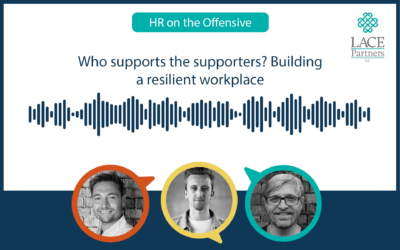We’ve just held the latest of our regular HR Shared Services community forums and, as usual, it was an invaluable opportunity to find out the HRSS zeitgeist in the new-look post-pandemic hybrid workspace.
A host of HRSS professionals joined us at the forum and discussed everything from the optimal operating model, talent, skills and capabilities all the way through to AI and the digital tech being used to deliver a great employee experience.
If you want to join us for the next forum, feel free to get in touch using the for at the bottom of today’s blog. Read on to find out what we discussed in more detail.
To outsource or not to outsource…
While outsourcing HR Shared Services was once considered a no-brainer to save costs, we discussed how this is no longer the case.
Some attendees outsource parts of HRSS with a slight increase in demand for outsourcing functions such as employee relations or ‘first response’ to employees.
A consensus was reached that there is no true, functioning outsourcing market framework in Europe, with no external provider in the position to offer a truly full-scale outsourcing model.
Problems of outsourcing payroll
Attendees agreed that when it comes to payroll specifically, again there is no truly globally outsourced provider available. This is something that larger businesses would like to access, given the number of countries within which they operate.
This impacts payroll resilience. For example, one attendee is not able to outsource payroll, but this leads to increased risks associated with arguably the most important function for the employee experience. If one person is running payroll for a business and they are unable to do so for whatever reason, what then?
Following intense discussion surrounding payroll outsourcing, the general consensus was that while the processing service could be outsourced, the need for an in-house point of contact doesn’t go away. The management of such a key function cannot easily be outsourced and there will always be a need to have someone in charge.
The plug and playability of pay on demand tools was also a point of discussion. There was general concern over how best to manage this given that paying on demand is acknowledged as a benefit for the employee, current systems cannot easily facilitate it.
What happens when you go global with HR Shared Services?
Half of the attendees work for a business that operates under a Global Business Service Model (GBS), and the resultant multi-layered approach to service centres was discussed.
Some attendees questioned how, given that this complicates the overall service delivery, how this impacts the employee experience. For example, employees often have to deal with multiple handovers between various departments – including HR – under a centralised GBS model.
This centralised model also throws up challenges in securing funding for new projects, given that HR is competing against other departments from the same resource pool. Unfortunately, this competitive approach to funding often leaves HR even further down the priority list.
Further challenges arise for HRSS providers from the difficulties in quantifying their ROI – how do you measure some of the intangible benefits from Shared Services? At LACE Partners, we’ve started to work out exactly how HR teams can improve the way in which they leverage data to inform decision-making. We launched a People and Workforce analytics service in March, which you can find here. Also check out our Whitepaper on the need for data analytics and HR decision making.
The question of AI and automation
Interestingly, while AI and automation is much discussed in the media right now, universal acceptance of its benefits seems some way off. Within the group at the forum, there was no consensus reached on the need to urgently adopt automated Shared Services.
However, there was a wide acknowledgement that businesses can do much more in this area, particularly for the purposes of internal mobility and external recruitment.
Automation has huge potential to identifying underutilised skills that are already present within a company’s workforce and better applying them to plug skills gaps elsewhere. We have a LACE podcast about internal mobility that might be worth a listen.
Some attendees agreed that AI could have profound effects on a business’s operating model. However, others pointed out that businesses must be wary. For example, businesses with a small number of employees in one country, predictive AI could become redundant. Without a large pool of internal talent there is little scope for automation to truly deliver internal mobility opportunities.
The conclusion of the group for now is that there is no ‘one size fits all’ when it comes to utilising the potential of AI and automation for internal mobility and skill identification.
Sourcing talent is still a huge priority
Finding new blood and keeping it flowing was identified this in our ‘One Big Thing’ campaign as a key priority in 2022, and the group discussion confirmed that this challenge isn’t going anywhere as we move through 2023.
We talked about the difficulties that surround identifying and sourcing the kind of talent businesses need. Some businesses can now choose from a wider pool of talent thanks to hybrid/remote working opening up more opportunities, but this cannot logistically help everyone.
Shared Services teams operating on the front line as first responders for employee needs, there is often a very real need to be in the office. This is particularly necessary when they need to quickly collaborate and communicate with colleagues in order to fulfil their roles.
Attendees also discussed whether the development curve is longer for hybrid or remote workers, which may hold them back from moving up the ladder. It was acknowledged that, once again, there is no one size fits all approach to the thorny question of hybrid versus in-office workforces. Some workers need to collaborate in person to improve, while others may thrive working remotely/with a hybrid pattern.
The final discussion point centred on the impact of the ongoing cost of living crisis and whether it’s impacting the enthusiasm for returning to office, given the costs associated with petrol or commuting.
We’ll pick up these discussion points at the next HRSS forum – if you’d like to get in touch with us about either joining us or to chat about any of the points raised, please reach out via the form below.






